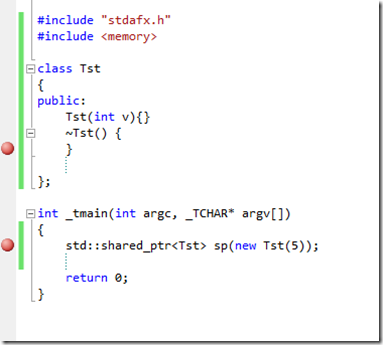To be honest, it’s been a long time since I did any real c++, however I’ve been reading a Java book lately and it’s made me kinda lonesome for C++, the Java book goes into a lot of detail about core language structure, it’s not a book on hibernate, swing etc, just core fundamentals like differences between an internal private class or an internal private interface, static binding of fields etc. I remember when I was at the height of my c++ development career I knew the intricacies about default parameters being statically bound in polymorphic classes, I knew about private inheritance, pitfalls of overriding non virtual functions, thinking back I knew the language quite intimately. Sure in the .net world I know quite a lot of the framework and the libraries toolsets etc (because i’m a greedy little pig and want to know everything) but, I wonder do i know the c# language quite as well as I once knew c++.
As I said at the outset I’ve been away from c++ for a few years now, I think the last time I did any commercial c++ was in 2006 when I was up to my eyeballs in boost/stl/wtl/atl etc, so what’s changed? Well there’s a new standard for one, C++11. Just to keep my finger in I’ve decided to start writing a few little blog posts on the new standard, this is the first one.
In Boost we used to used shared_ptr this class template stored a pointer to a dynamically allocated object, the object pointed to was guaranteed to be deleted when the last shared_ptr pointing to it was destroyed or reset.
e.g.
#include <vector>
#include <set>
#include <iostream>
#include <algorithm>
#include <boost/shared_ptr.hpp>
// The application will produce a series of
// objects of type Foo which later must be
// accessed both by occurrence (std::vector)
// and by ordering relationship (std::set).
struct Foo
{
Foo( int _x ) : x(_x) {}
~Foo() { std::cout << "Destructing a Foo with x=" << x << "\n"; }
int x;
/* ... */
};
typedef boost::shared_ptr<Foo> FooPtr;
struct FooPtrOps
{
bool operator()( const FooPtr & a, const FooPtr & b )
{ return a->x > b->x; }
void operator()( const FooPtr & a )
{ std::cout << a->x << "\n"; }
};
int main()
{
std::vector<FooPtr> foo_vector;
std::set<FooPtr,FooPtrOps> foo_set; // NOT multiset!
FooPtr foo_ptr( new Foo( 2 ) );
foo_vector.push_back( foo_ptr );
foo_set.insert( foo_ptr );
foo_ptr.reset( new Foo( 1 ) );
foo_vector.push_back( foo_ptr );
foo_set.insert( foo_ptr );
foo_ptr.reset( new Foo( 3 ) );
foo_vector.push_back( foo_ptr );
foo_set.insert( foo_ptr );
foo_ptr.reset ( new Foo( 2 ) );
foo_vector.push_back( foo_ptr );
foo_set.insert( foo_ptr );
std::cout << "foo_vector:\n";
std::for_each( foo_vector.begin(), foo_vector.end(), FooPtrOps() );
std::cout << "\nfoo_set:\n";
std::for_each( foo_set.begin(), foo_set.end(), FooPtrOps() );
std::cout << "\n";
// Expected output:
//
// foo_vector:
// 2
// 1
// 3
// 2
//
// foo_set:
// 3
// 2
// 1
//
// Destructing a Foo with x=2
// Destructing a Foo with x=1
// Destructing a Foo with x=3
// Destructing a Foo with x=2
return 0;
}
In c++ 11 we now get a shared pointer as part of the standard, see my example below.

I know there were some overheads to the boost shared pointer, memory footprint etc, (consider 1x106). of these guys in a container!. But in general shared_ptr can help you, because if you do it manually you’ll likely write slower, buggier code (or both).